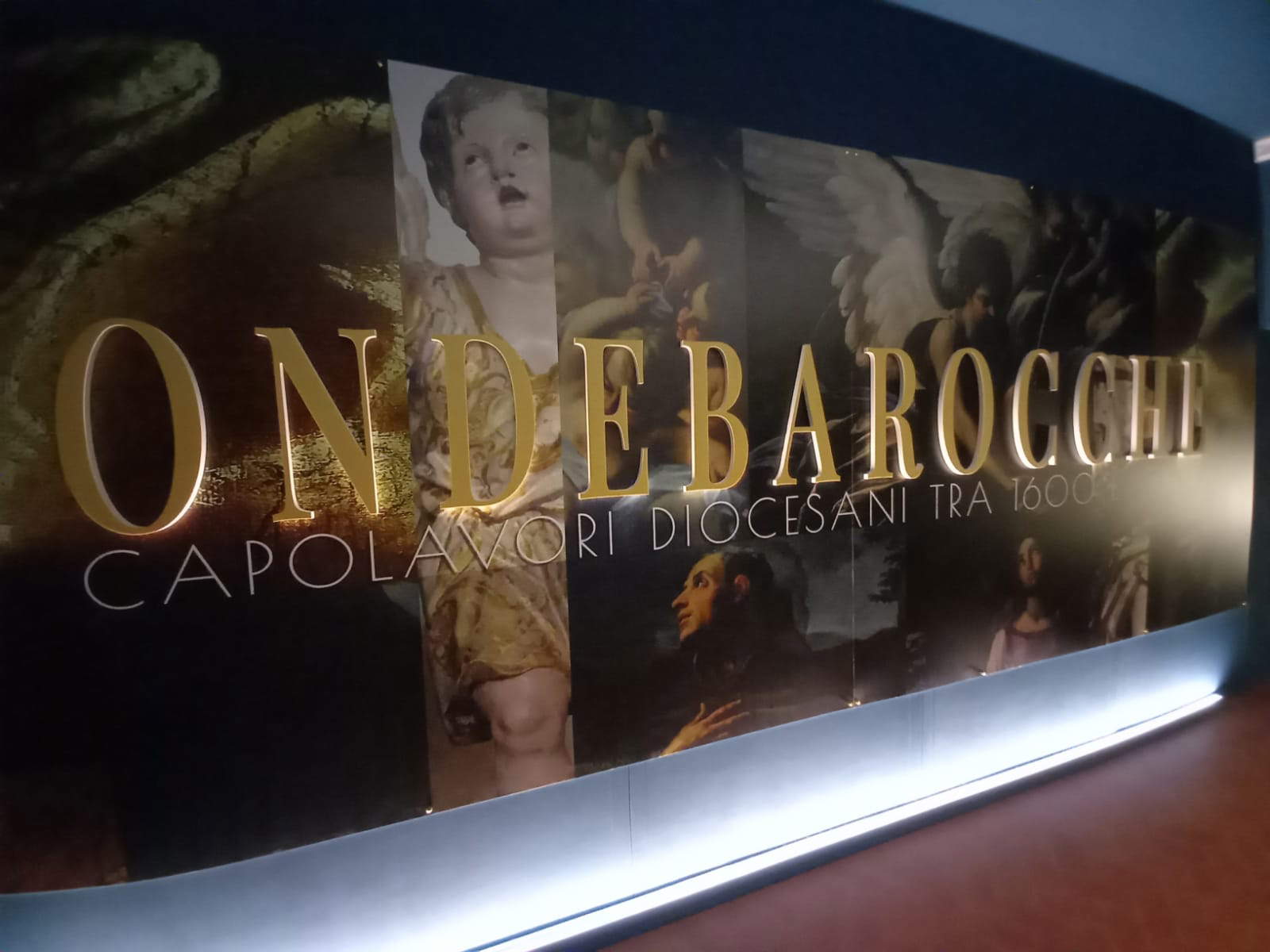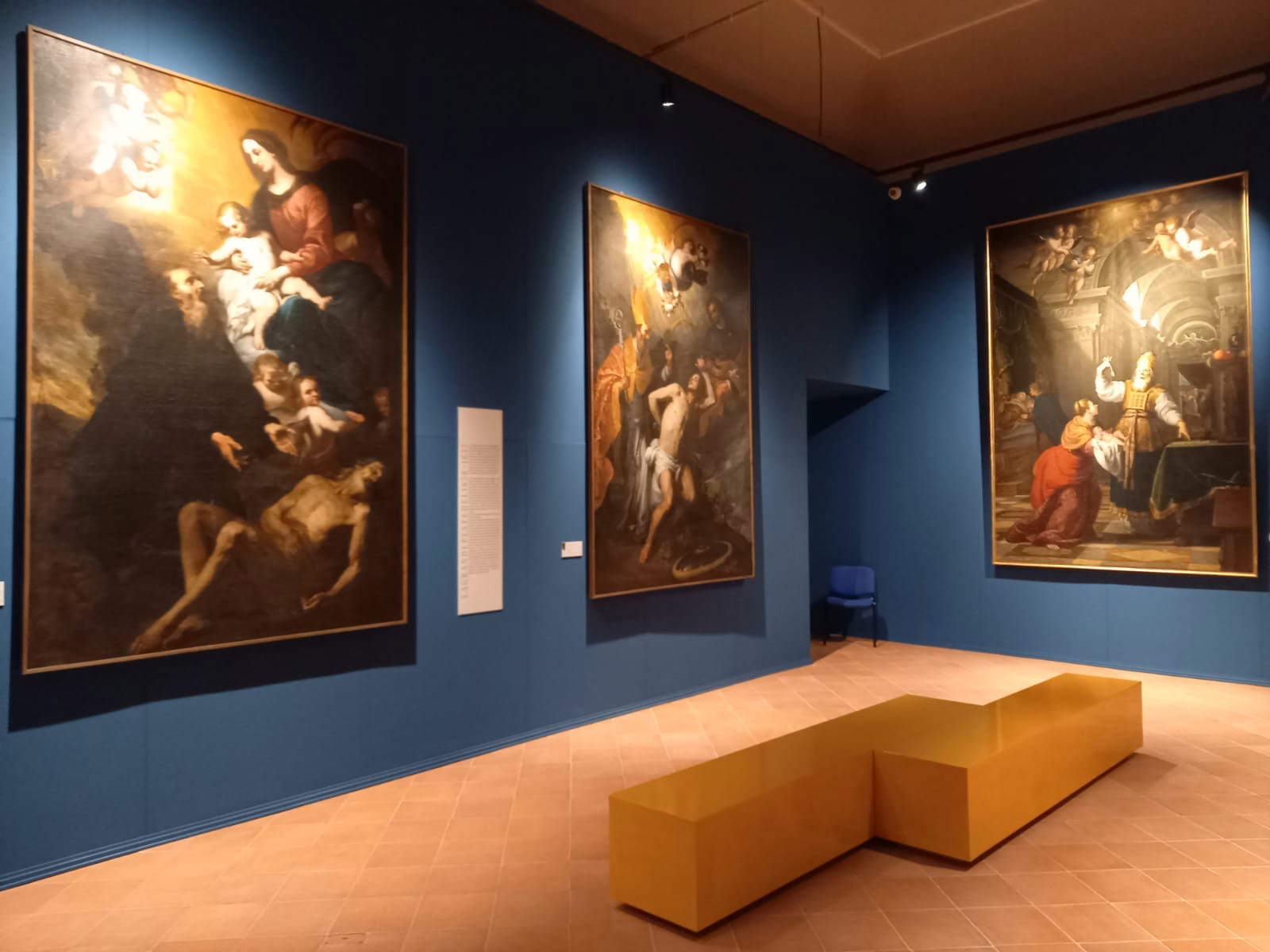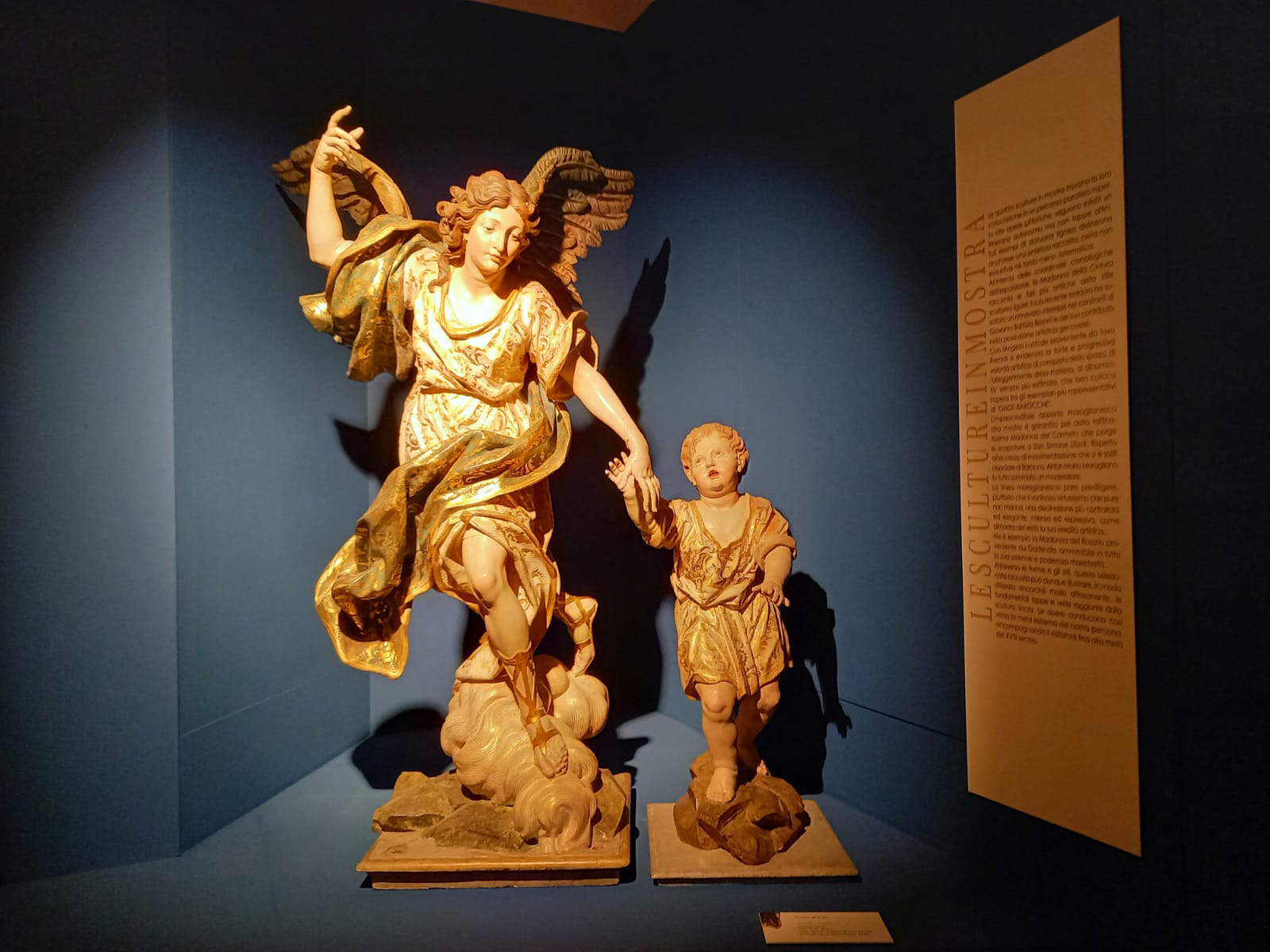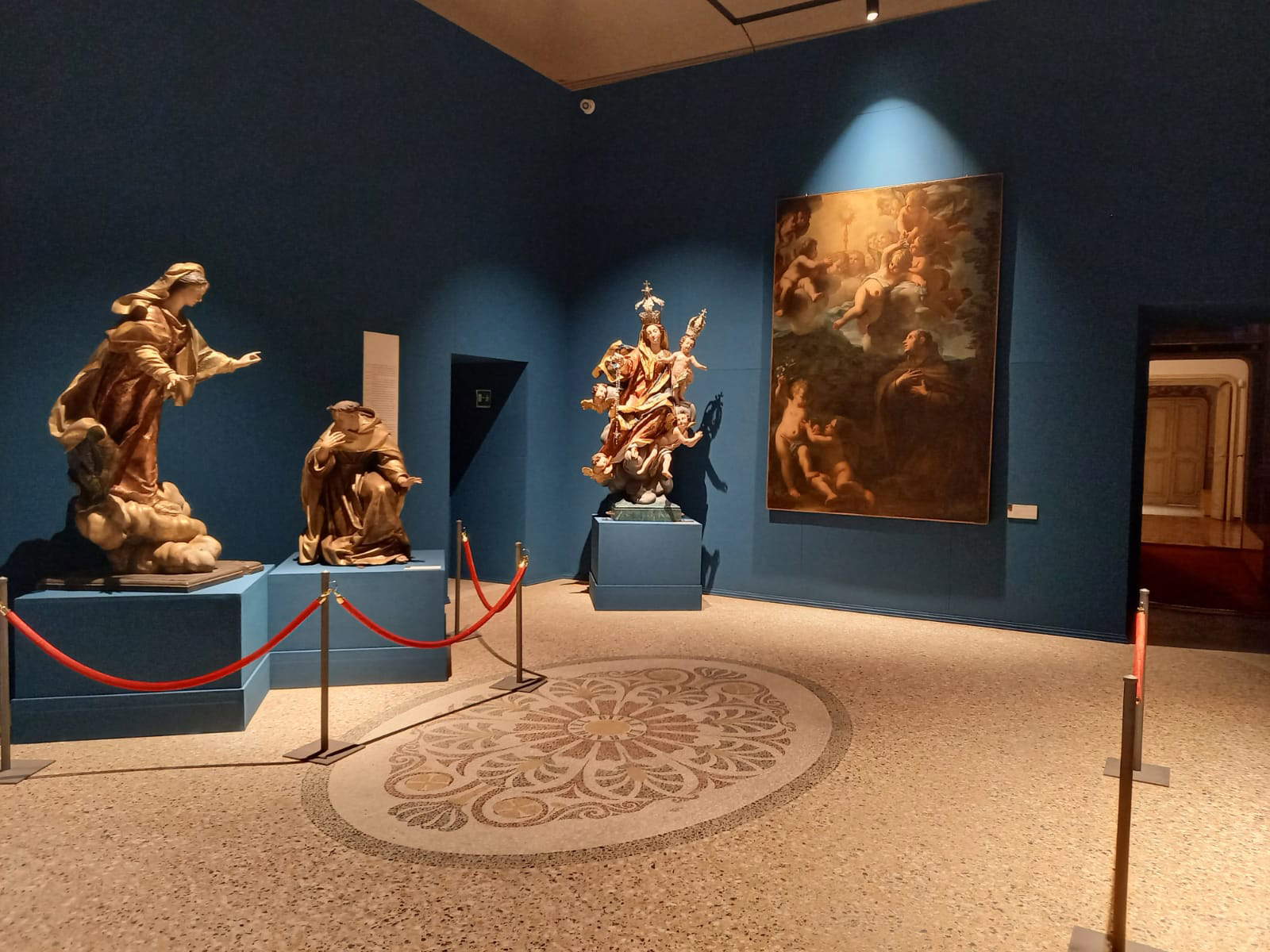Until Nov. 13, 2022 at the Diocesan Museum of Albenga, the Oratory of the Madonna della Ripa in Pieve di Teco (Imperia) and other places scattered throughout the territory of the Diocese of Albenga-Imperia is running the exhibition Baroque Waves. Diocesan Masterpieces between 1600 and 1750, whose intent is to let visitors discover the richness of the Baroque heritage present in this territory of Liguria and the protagonists of a very prolific artistic season, including Domenico Fiasella, Luciano Borzone, Domenico Piola, Gregorio De Ferrari, and Anton Maria Maragliano. We talked about it with Castore Sirimarco, director of the Office of Cultural Heritage of the Diocese of Albenga-Imperia and co-curator of the exhibition together with Don Emanuele Caccia, deputy director of the Diocesan Museum of Albenga.
IB. How did the idea of theOnde Baroccheexhibition , which was realized from a larger project of the Diocese of Albenga-Imperia entitled Formae Lucis,come about ?
CS. Formae Lucis is a symbolic name. It refers to the ancient mysticism that assimilates Grace to light and makes of it a creative and aesthetic power at the same time. The name initials a multifaceted campaign of events conceived by the diocesan Cultural Heritage Office. Thanks to a series of favorable circumstances, the Diocese of Albenga-Imperia has been able to equip itself in recent years with an impressive force, made up of people and talents, to promote the knowledge and conservation of its artistic heritage. In addition to conferences and cultural projects, the albeit difficult recent circumstances have not prevented ambitious projects, especially exhibitions and displays, not only at the Diocesan Museum, Formae Lucis’ first exhibition venue, but also in various locations throughout the Diocese. Within this journey, a challenging and most extensive project takes shape. Formae Lucis is pleased to present an unprecedented and, we hope, engaging event: with two main venues and spread across eleven sites throughout the Diocese, the exhibition Baroque Waves. Diocesan Masterpieces between 1600 and 1750 offers to all who know how to love painting and sculpture, an evocative and, we hope, unforgettable spectacle.
The works on display at the Diocesan Museum in Albenga and at the Oratorio della Ripa in Pieve di Teco come from collections that were formed over the centuries in the Diocese of Albenga-Imperia...
Yes, the art of Baroque champions that in Rome and Genoa have their capitals, so to speak, also brings its fruits to the diocesan lands. The “Baroque waves” thus reach as far as our coasts (Imperia, Diano Marina, Laigueglia, Alassio, Albenga, Loano) and then up to the churches of the deep hinterland, among swaths, woods and olive trees (Tovo Faraldi, Sarola), or in localities engulfed by valleys that were once capital economic hubs (such as Pieve di Teco) or, again, in sites located on heights with breathtaking views (Lovegno, Monte Calvario, San Pietro al Parasio). Often the most important artistic presences in our churches add up, overlap and overlap, sometimes in perfect coexistence, with the more conventional and popular paths, proper to local authors and heirs, so to speak, “lingering” in the artistic production of the second half of the 16th century. While the import of talent is strong in the Diocese of Albenga-Imperia, and the dependence on Genoa is strong, the local contribution to great Ligurian art should not be forgotten either: Giulio Benso and Gregorio De Ferrari, who were born in Pieve di Teco and Porto Maurizio (Imperia), are the outstanding testimonials.
Why was this area so rich in Baroque works between the seventeenth and eighteenth centuries?
The numerous presence of Baroque works in these lands was due to both commissioning and economic factors. Commissions from bishops, as in the case of Pierfrancesco Costa, from confraternities such as the Disciplinati of Pieve di Teco or the Trinitari of Monte Calvario, and from nobles, including the Costa family, combined with the later development of the olive tree and the oil trade. Those who traded this product had excellent economic possibilities, so much so that they could afford to commission works of art. From the beginning of the 18th century, primacy in oil and olive production shifted from Provence to the Ligurian territories, particularly Oneglia and Porto Maurizio, and this contributed to the increase in art commissions.





What are the most important works in the exhibition?
There are several, but in particular we point out a Young Saint John the Baptist by an anonymous seventeenth-century painter, a copy from Caravaggio (1603-1606; oil on canvas; Albenga, Museo Diocesano), Lorenzo De Ferrari’sAndata al Calvario (1840s; oil on canvas; Imperia, Oratory of St. Peter the Apostle), a wooden sculpture by Anton Maria Maragliano, depicting Our Lady of Mount Carmel Handing the Scapular to St. Simon Stock (1715-1716; Albenga, Rectory of Santa Maria in Fontibus), and aLast Supperby Domenico Piola (1649; oil on canvas; Pieve di Teco, Refectory of the Augustinian Convent, currently at the Oratory of the Ripa).
In addition to the two venues mentioned, the exhibition invites visitors to other places in the diocesan territory where Baroque masterpieces can be admired. Which are they? Can you list some of them?
The Diocesan Museum of Albenga has a first-rate collection that has been gaining increased attention in recent years, both from national and international institutions. The first exhibition nucleus is therefore the seventeenth-century one contained in the museum rooms, rearranged for the occasion in a careful and enhancing way. The result is a highly evocative and varied itinerary: in this regard, the project includes, as a major objective, the new exhibition format that the museum takes on for the occasion by totally transforming its halls and at the same time renewing the visit route, with the inclusion of areas accessible for the first time. The Madonna della Ripa complex in Pieve di Teco, given the richness of its artistic treasure, is a parallel exhibition pole to the museum. The Albenga and Pieve di Teco museum sites are then articulated in the connection with a few chosen sites that, spread throughout the territory, build a circuit of visits focused on the presence of significant works. The chosen sites that are added to the Diocesan Museum and the Oratory of Pieve di Teco are the Parish Church of Sant’Ambrogio in Alassio; the Cathedral of San Michele in Albenga; the Parish Church of San Tommaso Apostolo in Dolcedo; the Parish Church of the Nativity of Maria Santissima in Garlenda; and the Sanctuary of Santa Croce al Monte Calvario in Imperia; the Parish of St. Bernard of Imperia-Moltedo; the Oratory of St. Peter at Parasio of Imperia; the Parish of St. Anthony Abbot of Pieve di Teco-Lavina; the Parish of St. Matthew of Laigueglia; the Parish of St. John the Baptist of Loano; and the Parish of St. Nicholas of Bari of Pietra Ligure.
Onde Barocche also stands in dialogue with other exhibitions currently underway in Italy dedicated precisely to the Baroque...
With this exhibition, the Diocese of Albenga-Imperia ideally joins the two important exhibitions that, at the Scuderie del Quirinale in Rome and the Palazzo Ducale in Genoa and other places scattered throughout the Ligurian capital, narrate the explosion and paths of the Genoese Baroque between 1600 and 1750. Stimulated by the very generous participation and encouragement of the Ligurian Superintendencies and art historians, supported by the willingness and patient cooperation of parish priests, priors and communities who have offered their treasures with the most enlightened foresight, Formae Lucis has been able to create a collection of some of the most significant masterpieces that marked the multifaceted “Baroque” season in our territory. The close juxtaposition of large canvases and sculptures, sometimes barely visible or difficult to compare with each other, documents most effectively how rich the Baroque season was in the century and a half examined.
Warning: the translation into English of the original Italian article was created using automatic tools. We undertake to review all articles, but we do not guarantee the total absence of inaccuracies in the translation due to the program. You can find the original by clicking on the ITA button. If you find any mistake,please contact us.